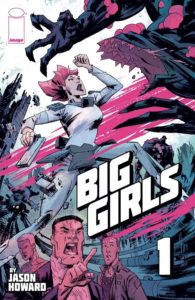 GOING BIG WITH JASON HOWARD: BIG GIRLS #1
GOING BIG WITH JASON HOWARD: BIG GIRLS #1
Story and Art: Jason Howard
Letters: Fonografiks
Published By: Image Comics
Cover Price: $3.99
We, comic book fans are no stranger to certain “rituals”, unique to our geekdom, such as keeping and treasuring hundreds of pollybaged floppies in long boxes – all of which might or might not be read ever again – or getting multiple copies of our favorite books in a myriad of formats. But perhaps, one of the most enjoyable of those rituals is picking up a #1 issue of a book we’ve never heard of before at our friendly LCS (Local Comicbook Shop). And it gets even better when said #1 issue is as good as the debut of BIG GIRLS, the first solo project of renowned artist Jason Howard (Trees, Astounding Wolfman).
Released a couple of weeks back by Image Comics, Big Girls is set sometime in the future, years after an incident – of which we only get a few clues in this first issue – detonated a genetic disease that affected both men and women alike, but with a big (pun intended) twist: men could grow into giant, kaiju-like, mindless monsters, while women simply grew several stories high, retaining their intelligence and human appearance.
While not every human is affected by this mysterious disease, this situation is already part of the culture and everyday life of this world´s society. Pregnancy registration became mandatory, in order to monitor any potential anomaly, and safe zones were put in place for regular citizens to live in. However, constant male monster attacks call for a special team dedicated to fight them back and keep people safe. A team of – wait for it – BIG GIRLS.
Although this is Jason’s first project as a full author, and despite carrying a good heap of exposition in the first issue, the book flows with a comfortable rhythm through the panels, using every available page to tell the story. And when I say every available page, I really mean it: even the usual credit page in almost every Image book is used as an establishing shot to kick start the story.
Jason is doing every part of the artwork: layouts, pencils, inks and colors, helped only by Fonografiks with the lettering. His art in BIG GIRLS has much more in common with his previous work in Trees than with his other longest-running book in Image Comics: Astounding Wolfman. Like in Trees, his inks are rougher and edgier, and he uses crosshatching to add depth to both characters and backgrounds. To some readers this stylistic choice could make them think that the artwork is a bit “dirty”, but it fits nicely with the world the characters live in and the situations they have to face on a daily basis.
His composition and storytelling are very clear and easy to follow, and his character’s designs allows the reader to fully identify who´s who in the panels. Manga and anime aficionados will immediately recognize certain influences in the creatures ‘design, the clothes and equipment of Ember –our main character so far- and the composition of certain shots, used both in classic franchises such as Neon Genesis Evangelion and modern day favorites like Attack On Titan.
All in all, BIG GIRLS # 1 is a solid debut for a new regular series, and I strongly recommend you to grab a copy at your friendly LCS or digital comic store of your choosing (Comixology, Google Play and Apple Books).
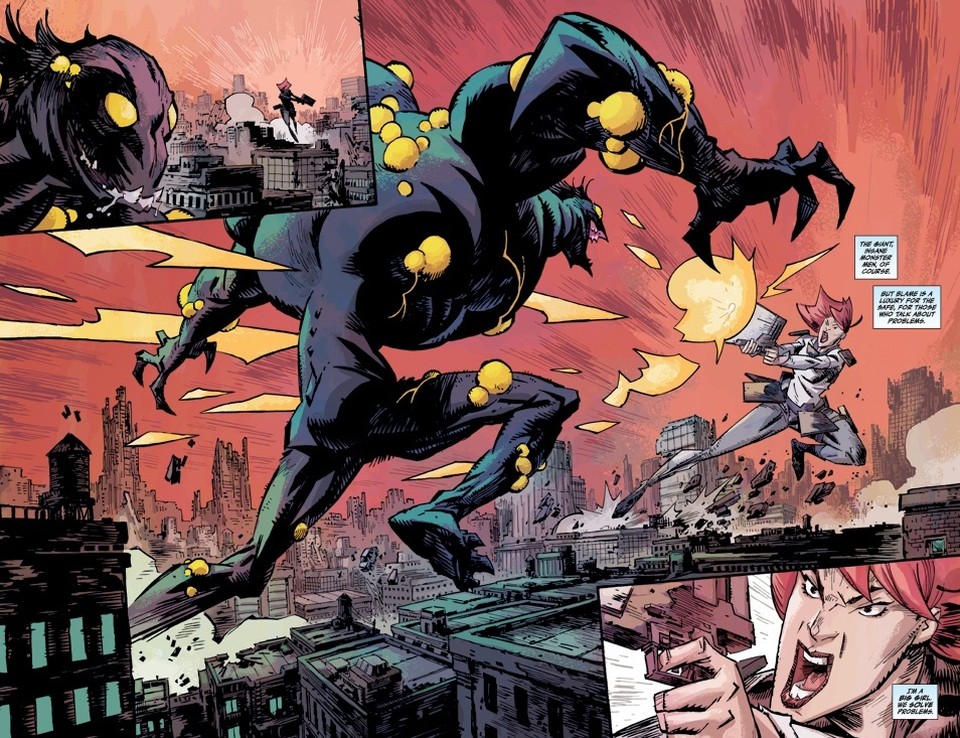


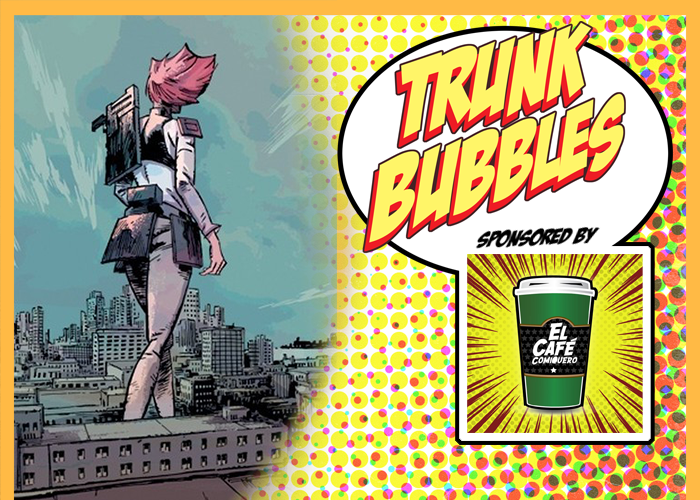
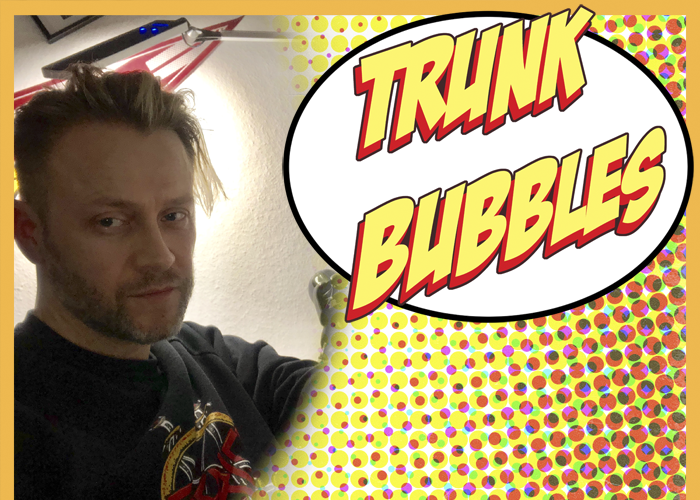
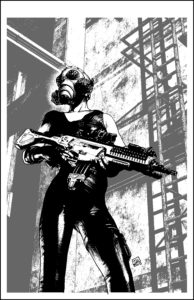 Name: Thomas Nachlik
Name: Thomas Nachlik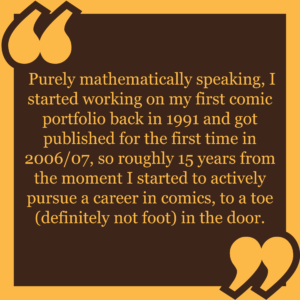
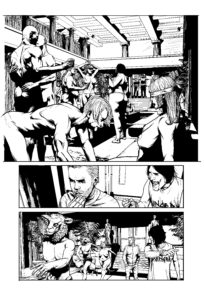 TrunkSpace: How has technology changed your process of putting ideas/script to page? Do you use the classic paper/pencil approach at all anymore?
TrunkSpace: How has technology changed your process of putting ideas/script to page? Do you use the classic paper/pencil approach at all anymore?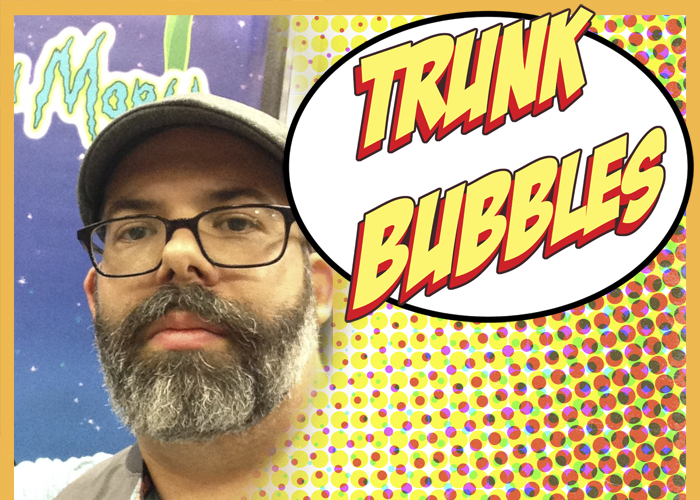
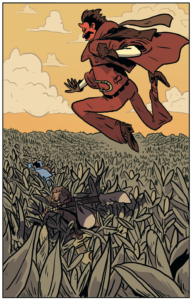 Name: Kyle Starks
Name: Kyle Starks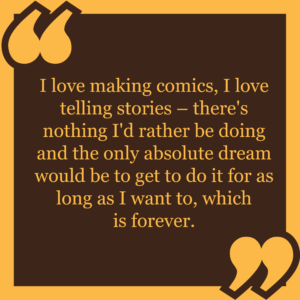
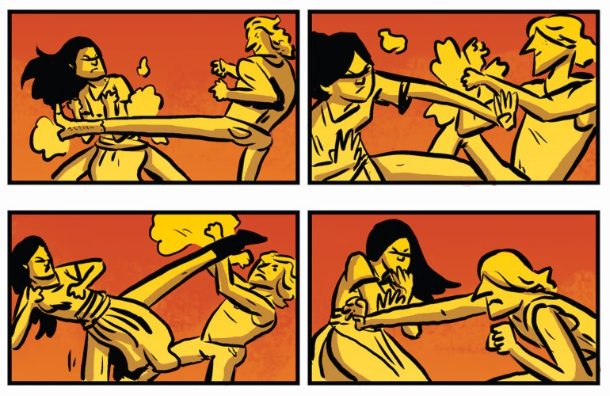
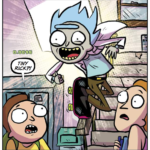 TrunkSpace: What advice would you give another young aspiring artist who is considering a career in the comic industry?
TrunkSpace: What advice would you give another young aspiring artist who is considering a career in the comic industry?